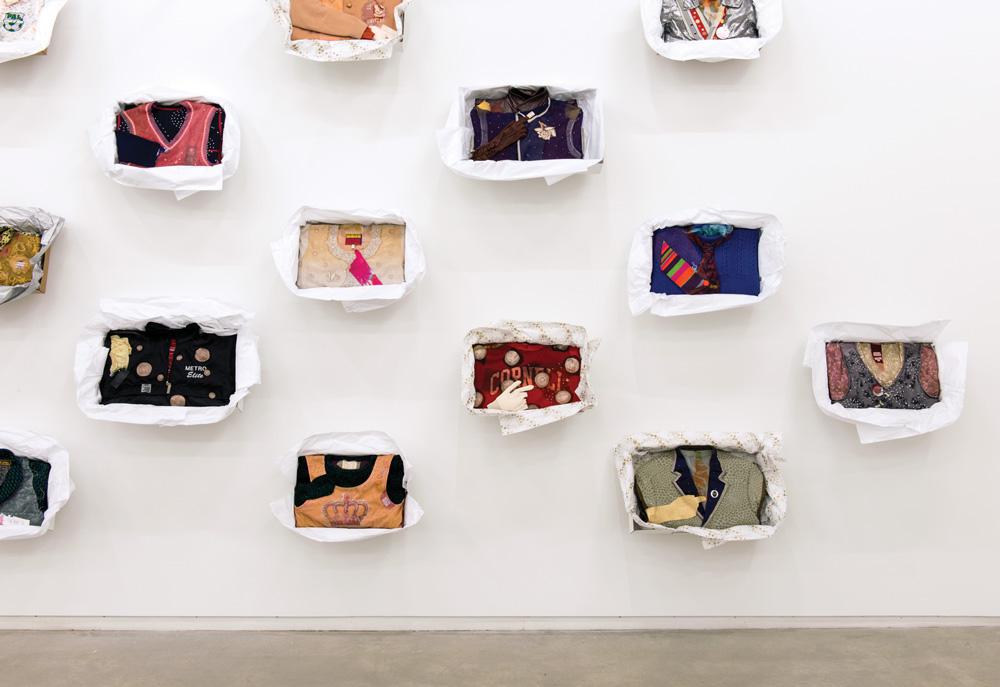In reference to earlier work, Liz Magor has spoken of an “aggressive offer.” The description fits with what she showed in “I is being This” at Catriona Jeffries, where the visitor was confronted by an army of gift boxes. Each box presents its own unique arrangement: a neatly folded shirt, blouse or jacket embellished with fabrics, sequins, price tags, garment labels, slogans and other found objects sits nestled in crinkly tissue paper like a freshly opened present.
One box catches the eye with a swirl of hot-orange tulle that wraps around a neatly trimmed hole. An elegant vintage label reading “Made in England” is featured in the centre. The archaic label—a rare find these days—immediately brings to mind today’s intensely globalized industry. Adding to the contrast, hand-sewn stitches attach a delicate net to a substrate of coarse machine-made fabric. The richly textured assemblage culminates in a crumpled candy-bar wrapper trapped beneath the sheer surface, suggesting compulsions that diverge from fashion but will eventually feed right back into it—I imagine the clichéd paranoia of dressing: “Does this make me look fat?” In fashion, sheer is sexy. In the best of this exhibition, sheer fabric becomes a morbid membrane mingling attraction, repulsion and compulsion: the desirable becomes abject, cool is corny and luxury is indistinguishable from trash.
Another piece features a haughty glove pointing to a regal insignia and a scattering of cigarette butts. The cigarette butts allude to the two enormous cigarettes supporting the gallery ceiling: cylindrical beams painted to resemble cigarettes evoke the smoking crowd clustered outside any opening. More “cigarettes” appear in The Rules (2012), a collection of painted driftwood ranging in size from a few inches to one and a half metres in height. Standing on their characteristic ochre tips, they make an oddly delightful crowd.
Magor is known for her polymerized gypsum sculptures, so her turn to found objects such as garments and driftwood seems a departure. Continuity is to be found in the murky side of the psyche that runs through the secret stashes, the hideaways, the peculiar simulations and the garment-based assemblages. “I is being This” worked by flaunting that which would be covered over while presenting the peculiarities of display. An “aggressive offer” can’t be refused—it arrives in those things that seduce us into identifying with them too deeply to resist. “I is being This” disrupted the syntax of those desires a little bit, with a cacophonous play of offers and counter-offers.
This is a review from the Spring 2013 issue of Canadian Art. To read more from this issue, please visit its table of contents.









